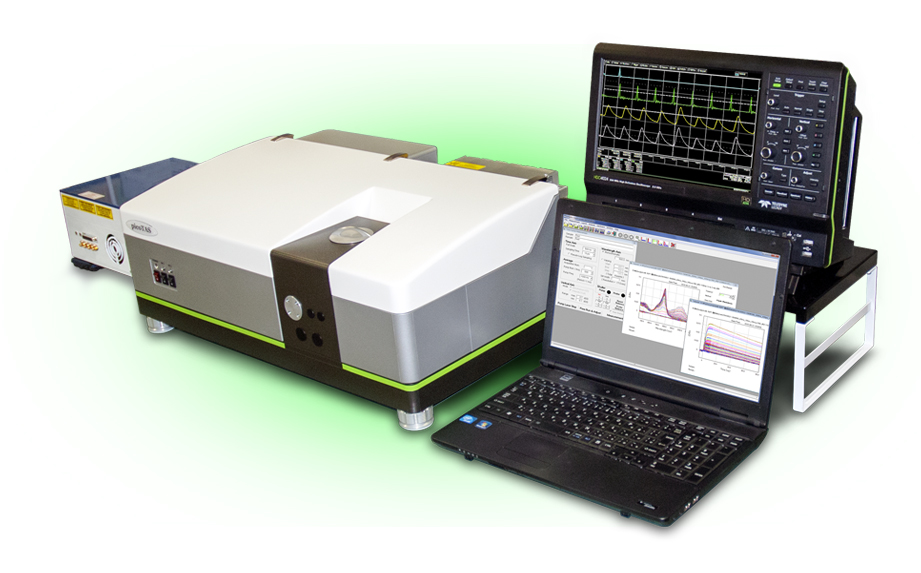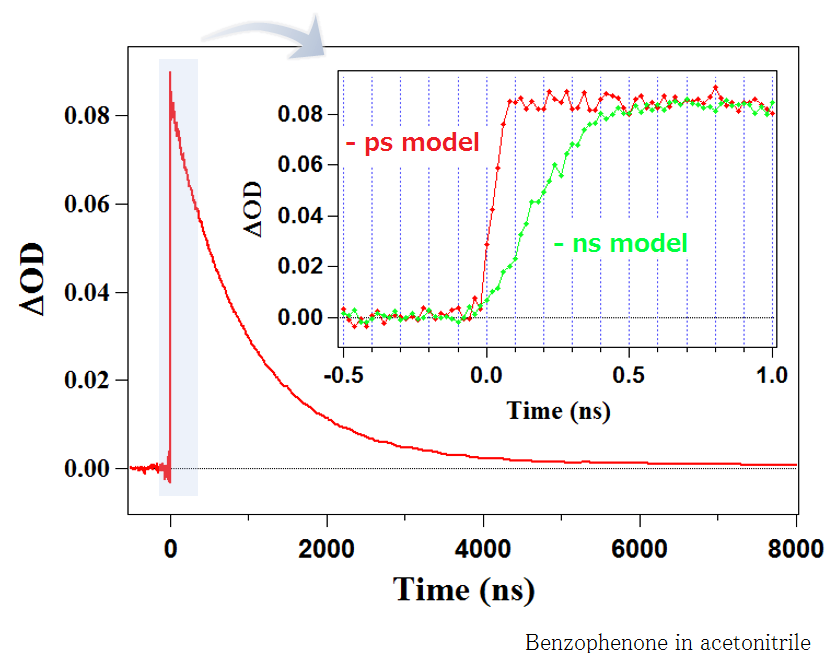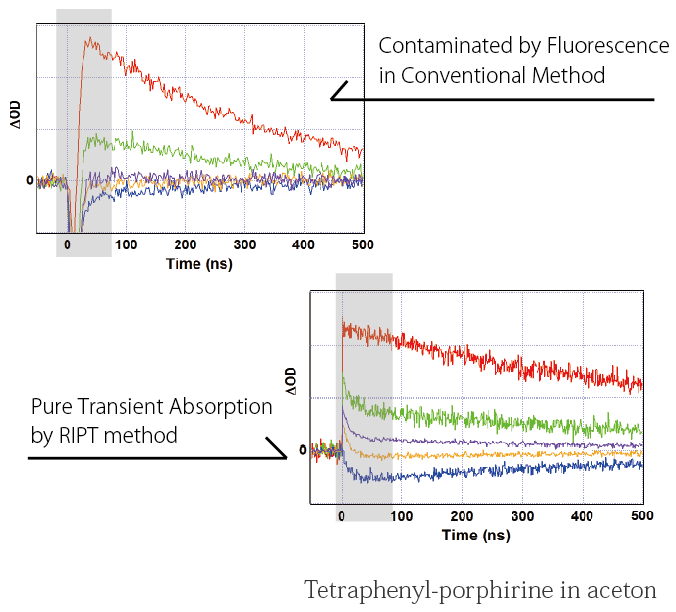 Optical Instruments > picoTAS
Optical Instruments > picoTAS
Picosecond Transient Absorption Spectroscopy System
picoTAS
Brochure
Brochure in Chinese
Published Papers

picoTAS can measure wide time range including "Gap Time Region" (1–20 nanosecond) in conventional transient absorption methods by using newly developed RIPT method (Randomly Interleaved Pulse Train method).
In addition, picoTAS has a capability of eliminating the influence of fluorescence.
Therefore, picoTAS can measure many photo-induced reactions which never have been observed, and new research opportunities will be opened up by exploring those phenomena.


Features
- Complete coverage of gap time region (1 ns–20 ns)
- Broadband wavelength range from VIS to NIR
- Transient absorption measurement from 100 picosecond to millisecond
- Removal of fluorescence signal
- Compact size, Optical bench is not required (-ns model)
Applications
- Observation of Transient Absorption Spectra of Excited Singlet/Triplet State
- Measurement of Intersystem Crossing (ISC) Rate
- Research of Electron Transfer, Charge Separation/Recombination Dynamics
- Observation of Intermolecular Reaction, Excimer Generation etc.
- Analysis of Dynamics of Artificial Photosynthesis, Solar Energy Cell, Organic EL
| Models | picoTAS-ns | picoTAS-ps | |
|---|---|---|---|
| Method | RIPT method (Randomly Interleaved Pulse Train method) | ||
| Time Resolution (10%–90% rise time) | <400 ps | <100 ps | |
| Delay Time resolution | 10 ps, 20 ps, 50 ps, 100 ps, 200 ps, 500 ps, 1 ns, 2 ns, 5 ns, 10 ns, 20 ns | ||
| Full scale | 100 ns–2 ms | ||
| Wavelength Range | 410–1600 nm | ||
| Automatic Control | wavelength scan, light intensity adjustment, shutter control | ||
| Sample Holder | solution (optical path length is 2 mm), thin film | ||
| Pump Light Source | Source | passive Q-SW microchip laser | picosecond mode-locked laser |
| Wavelength | 532 nm and/or 355 nm | 532 nm and/or 355 nm and/or 266 nm | |
| Pulse Width | <350 ps | <25 ps | |
| Pulse Energy | >20 µJ | >80 µJ | |
| Repetition Rate | 100–1000 Hz (variable) | 1000 Hz | |
| Probe Light Source | Source | picosecond Supercontinuum Light Source | |
| Pulse Width | <50–100 ps (dependent on wavelength) | ||
| Repetition Rate | 20 MHz ± 5% | ||
| PC & Software | OS | Windows® 11 | |
| Function | Automatic reconstruction of transient absorption temporal profile, curve fitting (nonlinear least square method), data storage in text format | ||
| Installation Environment | no optical bench required | on optical bench | |
Brochure Brochure in Chinese
